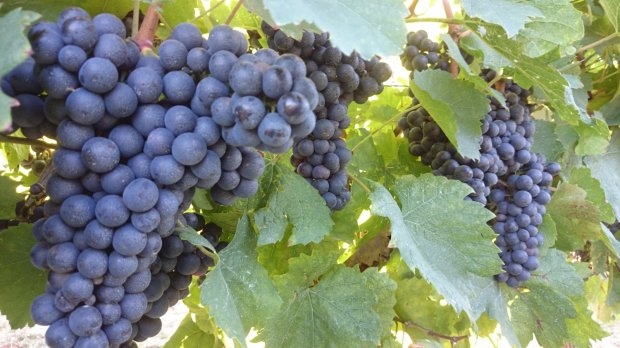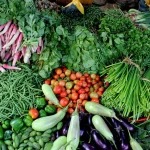
Frankovka is one of those wine varieties for which a lot of countries and regions claim that it’s indigenous for them, but unfortunately we do not really know where it first originated – most claim that is was Austria, but that was never unequivocally confirmed. It exists in most of Central Europe: Austria and Germany (where it’s called Blaufränkisch), Czech Republic (in particular southern Moravia where it is known as Frankovka), Slovakia (where it is known as Frankovka modrá), Slovenia (known as Modra Frankinja), Italy (Franconia) and Hungary (there it’s called Kékfrankos, which of course also means blue Frankish). The name is said to be coming from the name of Francia, a kingdom that held much of Europe’s territory in the Middle Ages. It’s a red grape, quite resistant to cold during the winter, but still needs a lot of sun in the summer, so it’s ideal for the region of Central Europe. In Croatia, it’s traditionally grown in Slavonia, on Plešivica, in Moslavina and in Istria (where it has a very local name “Borgonja”, which is not used elsewhere).
In Croatia, depending on how good the year is and how much sun the grapes have had, both the yield and the concentration of sugars and acids in the grapes can be quite high. The wine that it creates is intensively ruby red, refreshingly fruity in flavour (mostly berries!) and averages around 13% alcohol content. The tannins in Frankovka are usually quite high, and the acids are just enough to balance the wine. The characteristics of the wine are such that, in the good years, it makes perfect sense to allow the wine to age in oak barrels, as it has the capability of becoming a “large” wine after a few years. The colour of the wine, as well as its quite high acids make it a type of grape that is often blended with other varieties, in order to improve quality and appearance of other wines. Often it’s blended with another Austrian (and Croatian, of course) red favourite, Zweigelt, because of the complementary characteristics of the two varieties.
Many Croatian winemakers make Frankovka, both as a varietal wine and included in blends, so it’s easy to find it in the stores, or have a taste if you find yourself in Slavonija (Orahovica, Feričanci, Đakovo, Kutjevo specifically), Moslavina or Plešivica, where most of it is made. Some of Frankovkawill be premium quality wine, and the price you pay for it will probably be less than what you’d expect, so you can get crazy and buy a few more bottles, just for comparison.
PP Orahovica, Feravino, Iločki podrumi (special mention to a blend, Kapistran Crni, 70% Frankovka30% Cabernet Sauvignon), Vina Belje and many other producers make premium or quality Frankovka in Slavonia, varietal and as blends (mostly with Zweigelt and Cabernet Sauvignon). In Moslavina it’s often the only red variety the producer makes, such as Mikša and Florijanović, and this is where most Frankovka roses are made. In Istria, Damjanić, Cossetto and other make Borgonja, genetically identical but the different set of circumstances makes it somewhat different wine, more similar to Teran.
You should drink any serious Frankovka somewhat cooled, at around 16-18 °C, and enjoy it with dark meats, preferably grilled, game dishes, cured meat products and stronger cheeses.
PS and PSA regarding Frankovka: it’s one of the red wines with the highest concentrations of resveratrol, the anti-inflammatory and anti-aging compound, so that is an excellent argument to explain that you’re having the glass of red for health purposes only!










